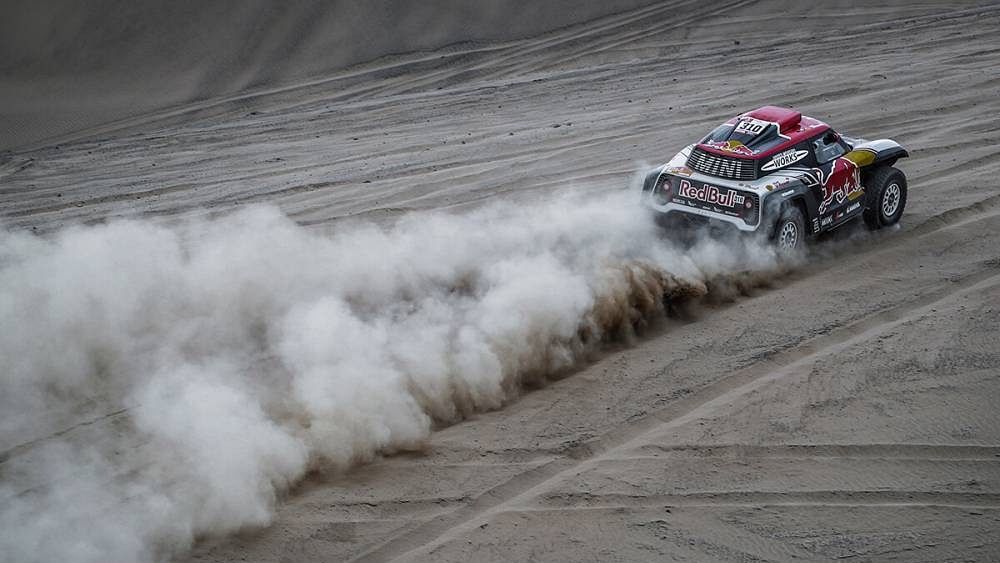In Photos: 40th Edition of the Gruelling Dakar Rally
This year’s Dakar Rally is longer and tougher than the last. These photos are proof!

Rally racing is considered the most difficult and extreme form of motorsports. The Dakar Rally, a benchmark of rally racing, is the most difficult race on the planet. Its 40th edition kicked off on 6 January 2018, when teams and individual contenders lined up for the thrill of their lives.
The Route
The race is held in stages, with each stage varying from short distances to up to 800 – 900 kilometres per day.
This year’s rally will start in Peru and go all the way through Bolivia to end in Argentina, to cover a distance of almost 9,000 km, with a total of 335 vehicles participating. Out of those 9,000 km, 5,000 km are on a completely off-road dune section while the rest (4,000 km) is supposed to on tarmac. This year’s race will have 14 stages, out of which the racers will be driving at an altitude of more than 3,000 metres for about 5 days, depending on their individual speeds and capabilities.
This year’s rally will be held in four stages and is said to start in Peru and cross through Bolivia and Argentina. The route will be 5,000 km terrain (off-road) and 4,000 km tarmac (road), both divided into 7 stages each.
The first stage of the 2018 event went across Lima and Pisco of Peru. The riders had to face the mighty deserts of Peru in the first stage.
The rally is being held in Peru after five years, the first time being in 2012-2013. But this time, it is said to be longer than the last. Dakar's sporting director said that the aim for this year's event is to explore the region to a better extent than the last time.
The second stage, on Sunday, 7 January, was completely desert. The start and end both being in Pisco. The second stage concluded with Adrien Metge of Sherco TVS (same team as CS Santosh, the first Indian to ever complete the Dakar) abandoning the race. The cars started first in the second stage.
The third stage of the Dakar Rally moved on from Pisco, ending in San Juan de Marcona. The 296-km special stage and a 208-km liaison section saw racers endure extreme terrain and battle sand and wind to make their way out of Pisco as Stage 3 ended.
India’s CS Santosh had a tough stage 3 as he struggled with a fuel issue. Santosh dropped to the 56th place due to a loose fuel cap. India’s other bet, Aravind, finishing the stage in roughly 3 hours and 49 minutes, improved his position substantially as he finished the stage at 13th place, making his overall position 20th.
With cars breaking down and bikers dropping out from exhaustion, stage four saw a number of competitors put their hands up. The remaining few left Peru for Bolivia as the course moved from the dunes to paths near the ocean.
The 'paysage' (terrain), as they call it, got even more pleasing for us to look at while becoming more extreme and dangerous for the drivers.
New difficulties greeted the competitors on another long day during the fifth stage of the rally, with a 508 km journey to Arequipa and 266 km through miles of sand dunes around Tanaka on the rally's last day in Peru.
The sixth stage saw the racers move on from Peru to Bolivia. They were subjected to wet weather, witnessing rain for the first time since the beginning of the rally.
(We Indians have much to talk about these days. But what would you tell India if you had the chance? Pick up the phone and write or record your Letter To India. Don’t be silent, tell her how you feel. Mail us your letter at lettertoindia@thequint.com. We’ll make sure India gets your message.)
(At The Quint, we are answerable only to our audience. Play an active role in shaping our journalism by becoming a member. Because the truth is worth it.)